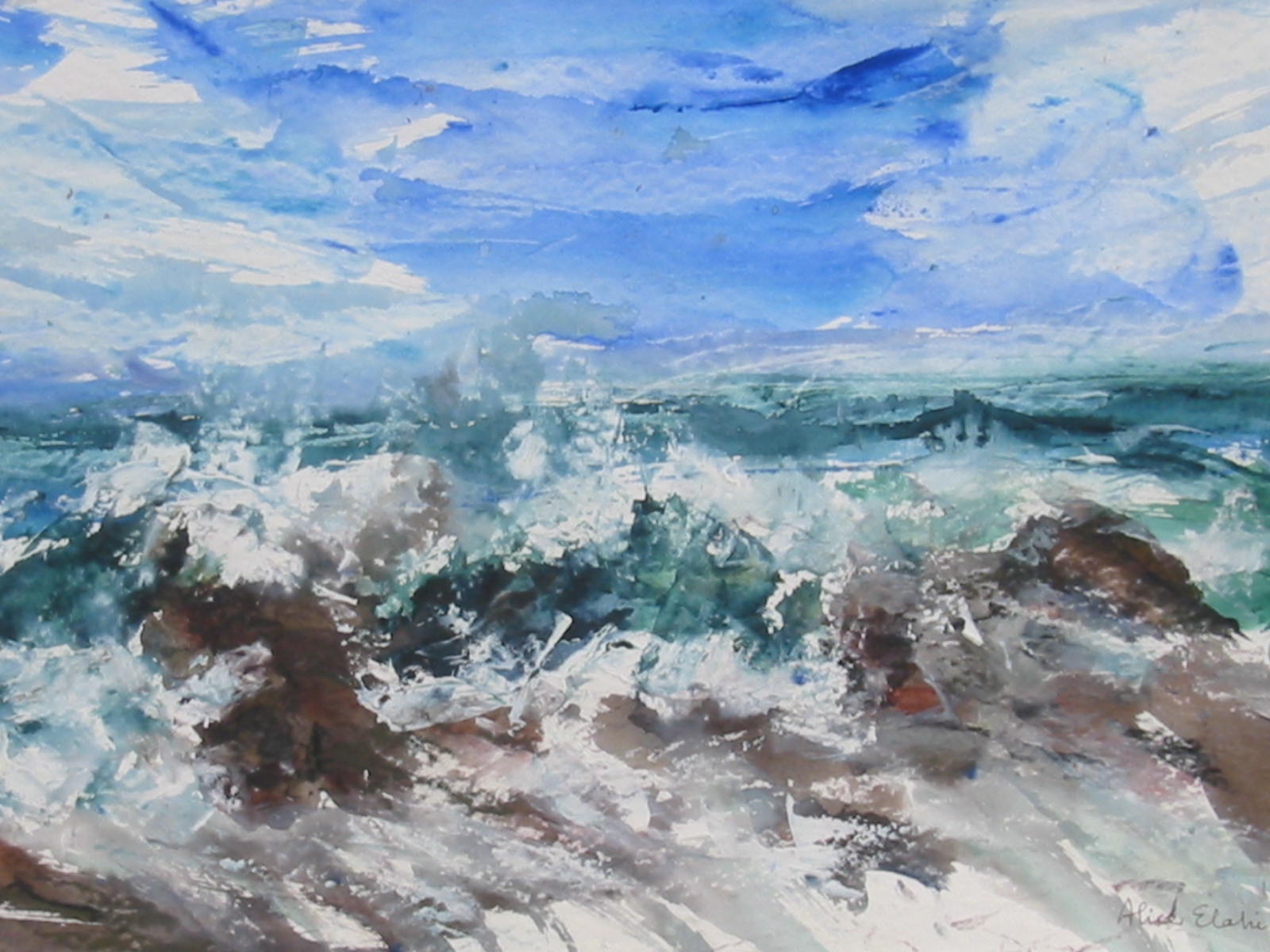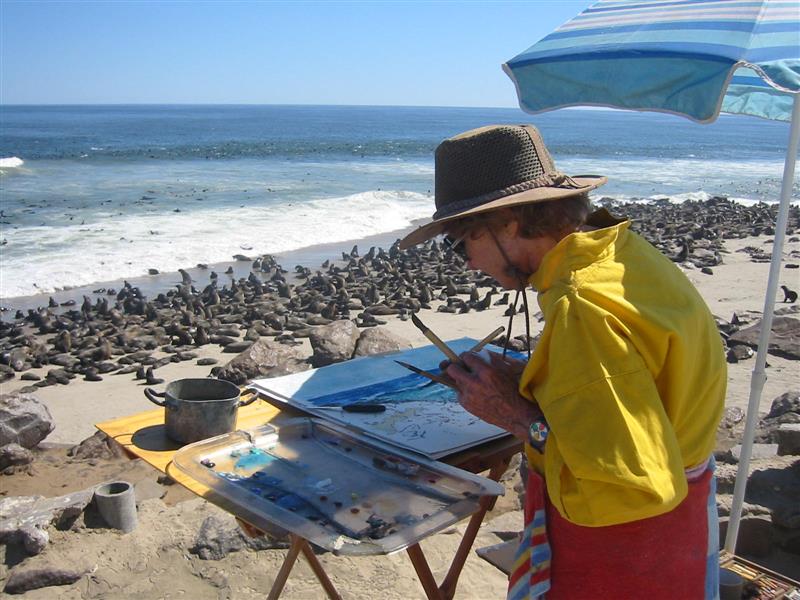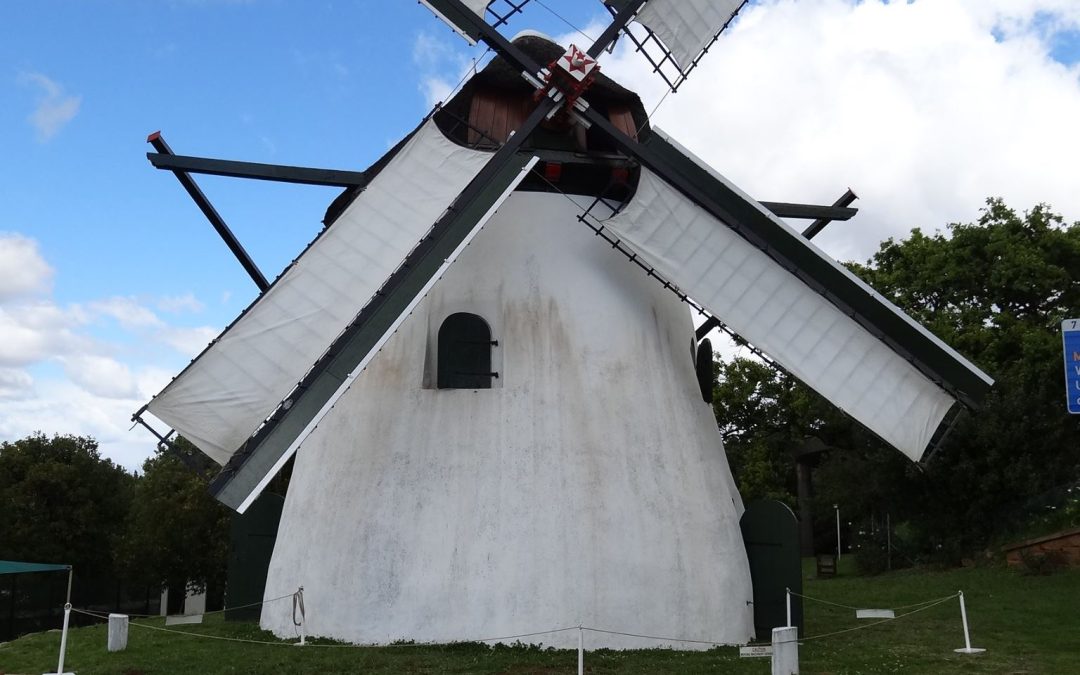The paintings of Alice Elahi are to be found in private homes, embassies, art museums and business offices around the world. Her death in March this year was a great loss to the South African art scene. She was best known for seascapes and desert landscapes of the Namib, some Bushveld scenes, as well as brightly coloured flower studies of irises and amaryllis.
Alice was born in Cape Town. She studied in the field of natural sciences at the University of Cape Town, but because of her love of art, acted as secretary to the university’s arts association in her spare time. After completing her degree, she studied art in Cape Town and thereafter in London.
Eventually, she and her husband, Nasrollah Elahi, settled in Pretoria.
In 1968 she won the New Signatures Award, thereby establishing herself on the South African art scene.
In about 1984, I saw her paintings for the first time. It was at an exhibition of works depicting the Namib Desert. Many of them, on the face of it, were just splashes of colour and lines, but the longer you looked, the more you could see in them.
Years later I visited an exhibition at the Pretoria Art Museum and fell in love with a watercolour depicting Möwe Bay in Namibia. I remembered a small inheritance from my grandmother “for emergencies” and decided that the purchase of the painting would qualify as an emergency. It has been hanging above my bed ever since and Möwe Bay is the first scene I see most mornings when my eyes open. Every day it looks new and at different times of the day, its colours seem to change. Creating this illusion is as far as I am concerned, the brilliance of her work and the reason why it will remain timeless.
Upon collecting the painting when the exhibition had closed, I first met her personally and I was completely starstruck. I did not know what to say to her. She noticed this and started speaking to me so kindly that I soon got over my shyness. She was not only adept at painting, but was a keen observer with a great compassion for people. She told me about the day she started “my” painting ‒ she was sitting alone painting on the deserted beach, and the sun was setting. Suddenly she became aware of a brown hyena watching her, and she felt vaguely uncomfortable: had he ever seen other humans before? Would he attack her if he was hungry enough? Eventually, she quit her job and finished the painting later.
She and her husband lived in a house with a wide surrounding veranda in Waterkloof ‒ not a modern architectural fantasy, but a house that reminded me of my grandparents’ farmhouse, with wooden floors and pressed metal ceiling. There were many huge old trees all around the house. At the end of the year, when the jacarandas flower, she held exhibitions at the very house. One was usually invited there with a postcard depicting one of her works. On the porch, pineapple cooldrink and cookies usually welcomed the guests. Some of the paintings hung in the foyer and sitting room, others on the porch. It was a riot of colour, with the paintings on one side and on the other, the trees and jacaranda flowers. She could also remember people very well ‒ where you worked, your family, which painting(s) you had previously bought. Whether or not you would buy something again, did not matter to her. Passionate collectors and church mice like me were received with equal hospitality.
The nicest of chats with her on the porch was when she told us about her annual painting trips. Sometimes she went on her own to the Namib and here she also took incredibly beautiful photos. Sometimes she presented slideshows and then told the audience more about these adventures. The colours and textures of the desert captivated her imagination and constantly challenged her to capture it on canvas.
The porch was also a gathering place for attractions such as a whale’s vertebra and stones she collected during her travels.
One day she wanted to talk to me, but had to take her leave of other guests first. She let me sit on the stairs with a bowl of sand and a magnifying glass so I could admire all the colours and shapes of the grains ‒ a miniature rainbow world!
The last time we met, she talked about her concerns about poverty in the country and young people with no future prospects. It was a reminder that she painted nature, but saw people just as clearly as the landscapes she loved.
In total, we probably met less than ten times, but she remains one of the people I will remember most vividly and who has had the biggest impact on my life. She taught me to appreciate colour and texture, and to pay attention to such detail in larger images. Her modesty and humanity will also remain an inspiration.
In addition to various media and art publications, her daughter Nushin published a limited edition book in 2018 about her work.
Everyone who had the privilege of knowing her is left poorer by her death, but will also have the enjoyment that the many works she created will continue to offer.

Crashing wave – Hondeklip baai – Mixed media









